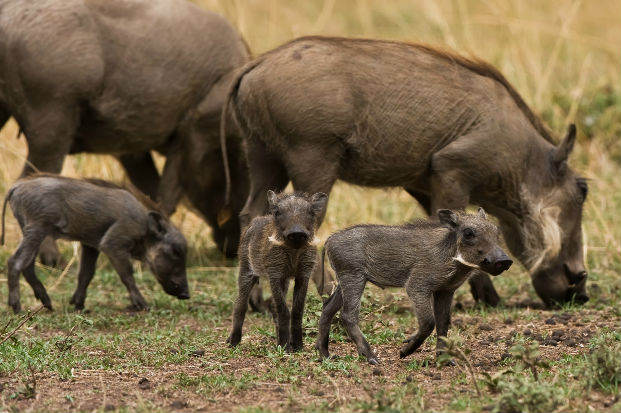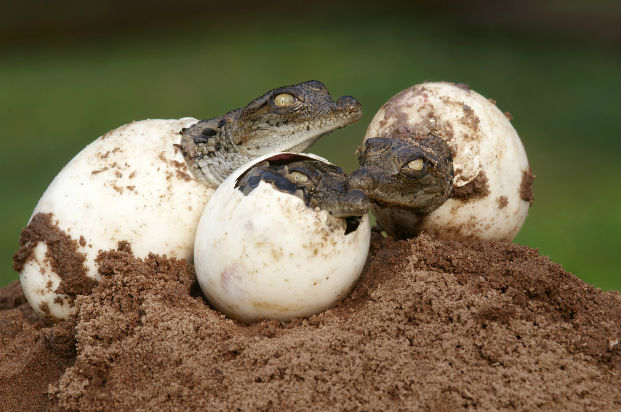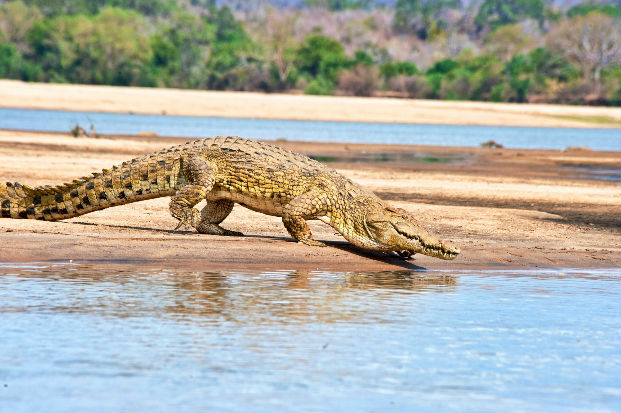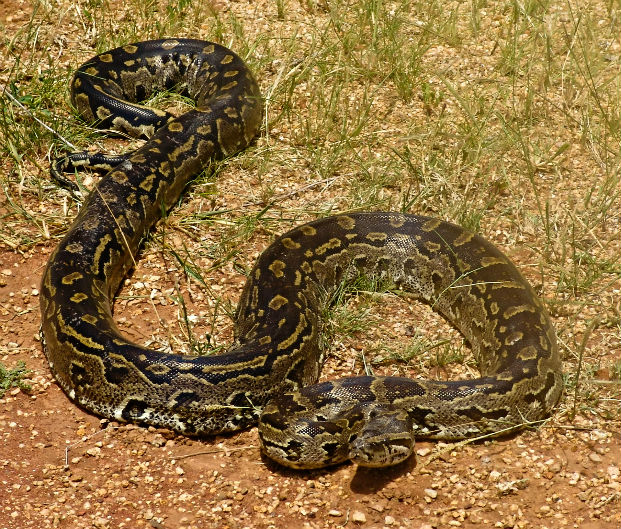The level of parental care differs greatly from species to species. The ultimate goal is to ensure that the offspring reach reproductive age and then go on to reproduce. By doing so they carry the parent’s genes forward. Parental care can include building nests and excavating burrows, taking care of eggs and newborns, provisioning for young that have not hatched and even tolerating their young as they begin to find their way as an independent adult. Here are some examples of parental care by the species featured on Fascinating Africa, which is your favourite?
Vote for the fact you find most fascinating
A female Nile crocodile will dig a 50 cm deep hole where she will lay approximately 45 eggs in layers which are divided by sand to protect them. Once the eggs have been buried she will stand guard for 3 months. As the eggs hatch she will excavate them and transport the hatchlings in her mouth to the water.
The female African rock python demonstrates parental care which is very rare in reptiles. She coils around her eggs to offer them protection and warmth during the 6 to 8 week incubation. During this period she will bask in the sun and then return to transfer warmth to the eggs. She may care for the young for 2 weeks after hatching.
A civet kitten will have its own dedicated teat when suckling from its mother.
5 female ostriches may lay their eggs in one scrape (nest) but only the major female incubates them. Being able to recognise her own eggs she ensures that they are in the centre. The rest will be moved to the side with many not be incubated.
A female warthog will forge a raised shelf in the burrow on which the piglets will sleep. This keeps them out of cold water which may run into the main chamber.
When adult ostriches who are caring for a crèche detect a threat they will perform a distraction display where they lead the predator away. They do this by falling to the ground, flaying their neck around and flapping their wing around as if it were broken.
Some species of centipede demonstrate parental care. Laying 20 to 60 eggs in an underground burrow she will then proceed to wrap her body around the eggs for up to 2 months until they hatch.
A mother will chase away all other zebra from coming close to her new born until her own smell, stripe pattern and voice are recognised by and imprinted on the foal. A zebra’s stripe pattern is unique to that individual.






